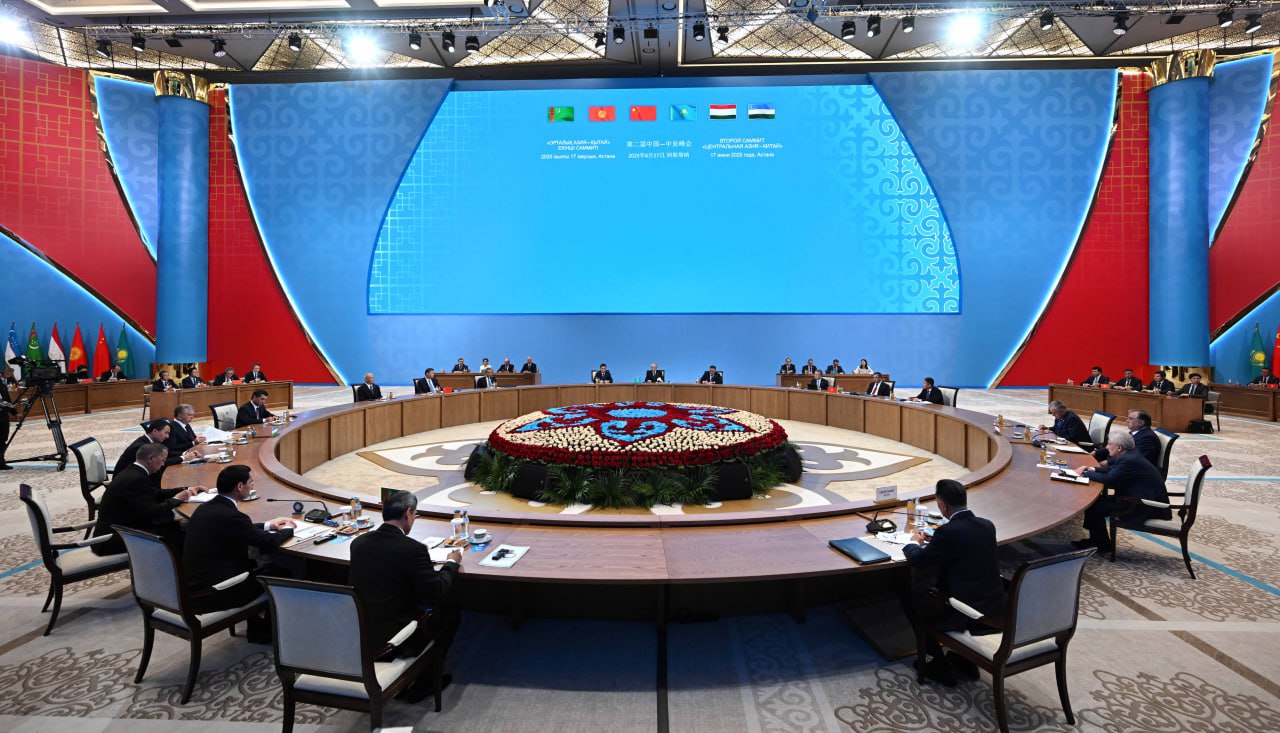BAKU, Azerbaijan, June 18. Astana hosted the Second China-Central Asia Summit on June 17, reaffirming its role as a key diplomatic center in Eurasia. Against the backdrop of rising geopolitical tensions, the summit highlighted deepening trust, strategic vision, and growing economic cooperation between China and Central Asian nations.
The summit formalized a new level of ties - a comprehensive strategic partnership - through the signing of a Treaty on Eternal Friendship and Good-Neighborliness, supported by the Astana Declaration, which outlines long-term, stable cooperation.
Economic cooperation featured prominently. At the China-Central Asia Industrial and Investment Cooperation Forum, Kazakhstan and China signed 58 agreements worth $24 billion. Another $17 billion in deals was concluded during the Business Council session. The scale underscores China’s long-term investment interest in the region.
President Kassym-Jomart Tokayev noted that in 2024, China accounted for around 40% of Central Asia’s foreign trade - about $95 billion - with Kazakhstan representing nearly half of that. Bilateral trade between Kazakhstan and China has reached $44 billion, and Chinese investment in Kazakhstan exceeds $26 billion. Around 5,000 Chinese-backed companies now operate in the country.
Ahead of the summit, Tokayev and Chinese President Xi Jinping signed 24 cooperation documents across sectors, including energy, aerospace, digitalization, tourism, and regional development.
Transport and connectivity were central topics, with a strong focus on the Trans-Caspian International Transport Route, or Middle Corridor. As traditional routes face disruptions, the Middle Corridor is becoming a strategic transit link between China, Central Asia, and Europe.
“Central Asia is becoming a key logistics hub between Asia and Europe,” Tokayev said, noting that 211,000 containers were shipped from China through the region in 2024 - up 12% from the previous year. Kazakhstan handled 85% of these shipments. Tokayev proposed building a joint cargo terminal with China at the Caspian Sea port of Kuryk to boost the route’s capacity.
He also suggested aligning China’s Belt and Road Initiative with regional infrastructure projects, including the Middle Corridor, North–South, and Western China–Western Europe routes.
Energy cooperation is also expanding. Kazakhstan, one of the world’s top uranium producers, is seeking greater involvement in the nuclear energy value chain. Tokayev confirmed that China’s CNNC will be among the partners in building a nuclear power plant in Kazakhstan, citing its technological expertise and international reputation.
“Kazakhstan is a reliable supplier of uranium and nuclear fuel to China,” Tokayev said. “We are committed to sustainable cooperation in this strategic sector and will soon sign a relevant agreement.”
Uzbekistan played an active role, with President Shavkat Mirziyoyev proposing the creation of a China–Central Asia Interregional Trade and Investment Council and a new economic partnership program. He also suggested establishing a regional standardization center in Tashkent, launching an “E-Silk Road” platform, and developing a roadmap for technology transfer.
President Xi Jinping pledged a 1.5 billion yuan ($210 million) grant for regional development projects, focused on improving living standards.
A number of agreements were also signed in humanitarian cooperation, including a 2025–2026 cultural program and initiatives to ease mutual travel.
Overall, the summit concluded with documents covering:
-
Cooperation in industry, economy, transport, digital trade, green minerals, and customs;
-
An action plan for Belt and Road Initiative implementation;
-
Cultural and humanitarian exchanges;
-
A joint approach to sustainable transport and mobility.
A key outcome was the announcement of a long-term China-Central Asia cooperation strategy for 2026-2030.
The summit confirmed the evolving nature of the partnership-not just as a political dialogue platform, but as a foundation for economic growth, technological collaboration, and regional integration. Amid global uncertainty, China and Central Asia are choosing cooperation, connectivity, and modernization over division - laying the groundwork for a new regional order based on trust and shared interests.







